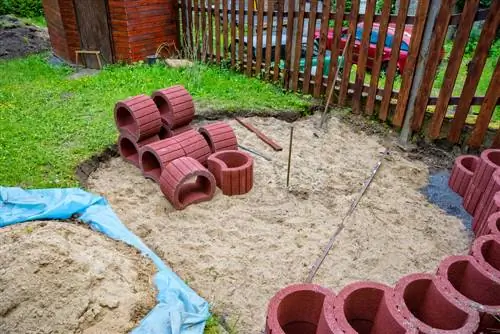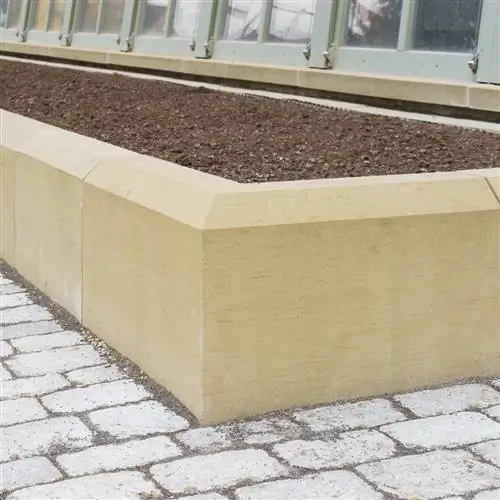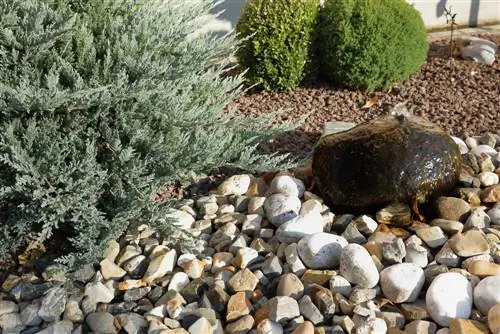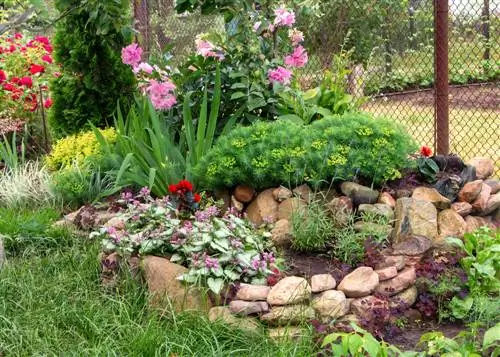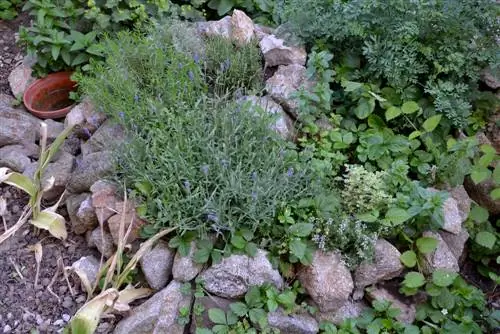- Author admin [email protected].
- Public 2023-12-16 16:46.
- Last modified 2025-06-01 06:02.
Having your own herb bed is an immense enrichment for the kitchen and fragrant do-it-yourself projects. But what type of bed system should it be? Plant stones have proven themselves in several ways - we'll show you why.

Why are plant stones suitable for a herb bed?
Plant stones are ideal for a herb bed because they offer good heat retention, the size is ideal for herb plants and different types of herbs can receive individual substrates. The terrace-like structure also makes maintenance and harvesting easier.
Planting stones - pragmatic and decorative
Plant stones are now one of the most established solutions for practical and decorative bed systems. They are usually made of granular concrete and have a semicircular shape that is open at the top and bottom. These open plant troughs are designed so that they can be stacked on top of each other like a terrace on a slope. This results in a sloping, semi-vertical bed area with neatly separated plant pots.
The practical thing is that this bed system is relatively easy to set up, although not entirely uncomplicated. In addition, the plant stone terraces can be created quite individually - depending on the space available and the desired extent of planting, you decide how many plant stones you need and can arrange them however you like. Of course, the system can also be expanded later by purchasing plant rings.
The advantages of plant stones:
- result in easy-to-work, terrace-like beds
- individual, clearly separated plant troughs for different plants
- can be arranged individually
- can be expanded later
Why plant stones are particularly suitable for herbs
A planting stone system is particularly suitable for herbs. On the one hand, the size of the plant troughs is ideal for herbs growing as small perennials or dwarf bushes. You can also keep high-spreading varieties such as lemon balm under control.
The stone material is also a good heat store, which is particularly beneficial for Mediterranean herbs. If you place the plant on a south-facing slope, the overall structure can absorb a lot of heat and offer the best growing conditions for light and heat-hungry herbs.
You can also put together your own favorite substrates for different types of herbs in the individual troughs. For chives or lovage, fill a planting ring with nutrient-rich, humus-rich soil and for rosemary or thyme one with barren, sand-rich substrate. This means you can plant varieties with different soil requirements right next to each other.
Last but not least, the sloping terrace structure is also very pleasant for a herb bed that is often visited for harvesting. Especially if you like to work with fresh herbs in your daily cooking, the structure will prove to be extremely pleasant - and your back will thank you in the long run.

